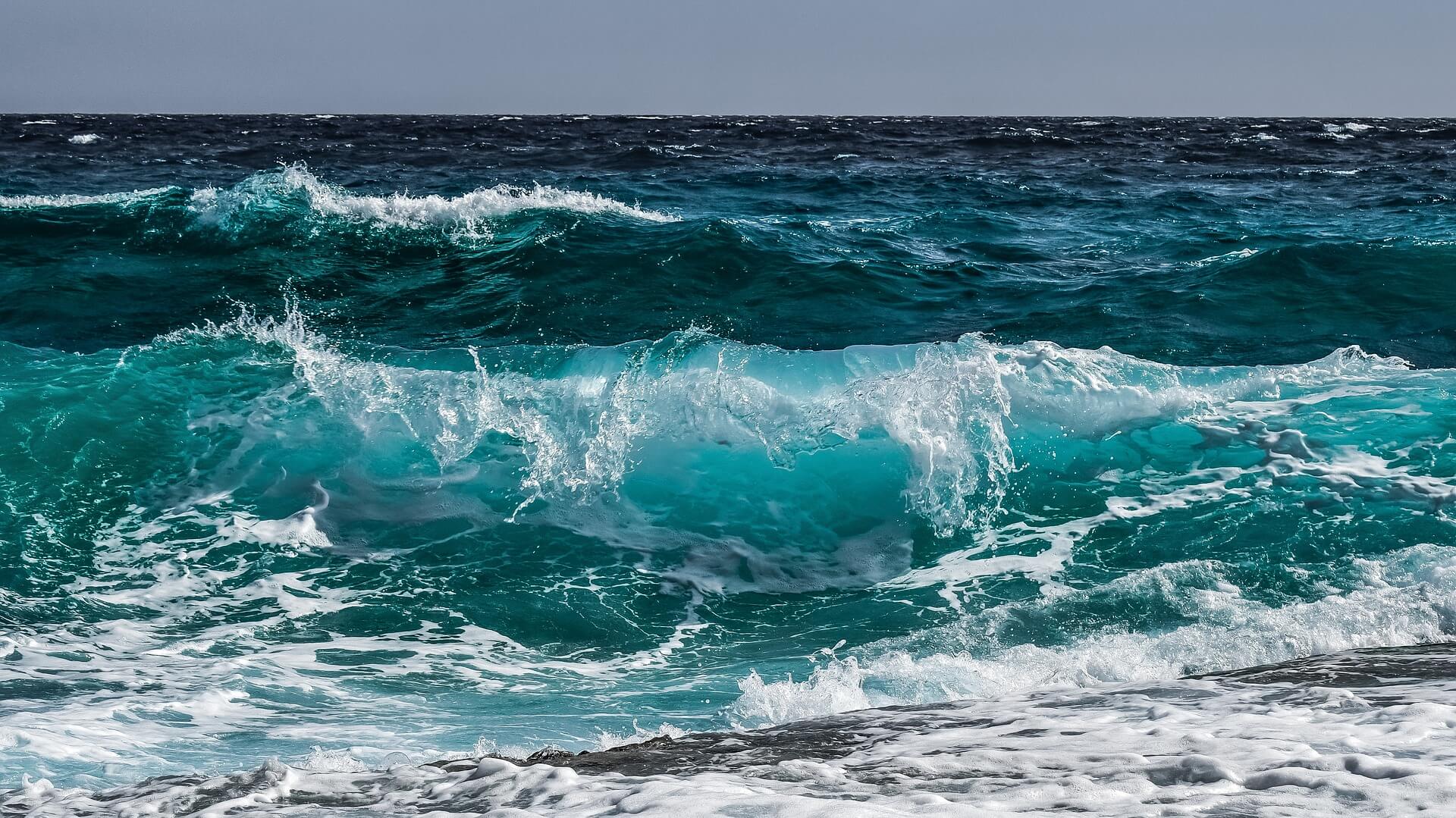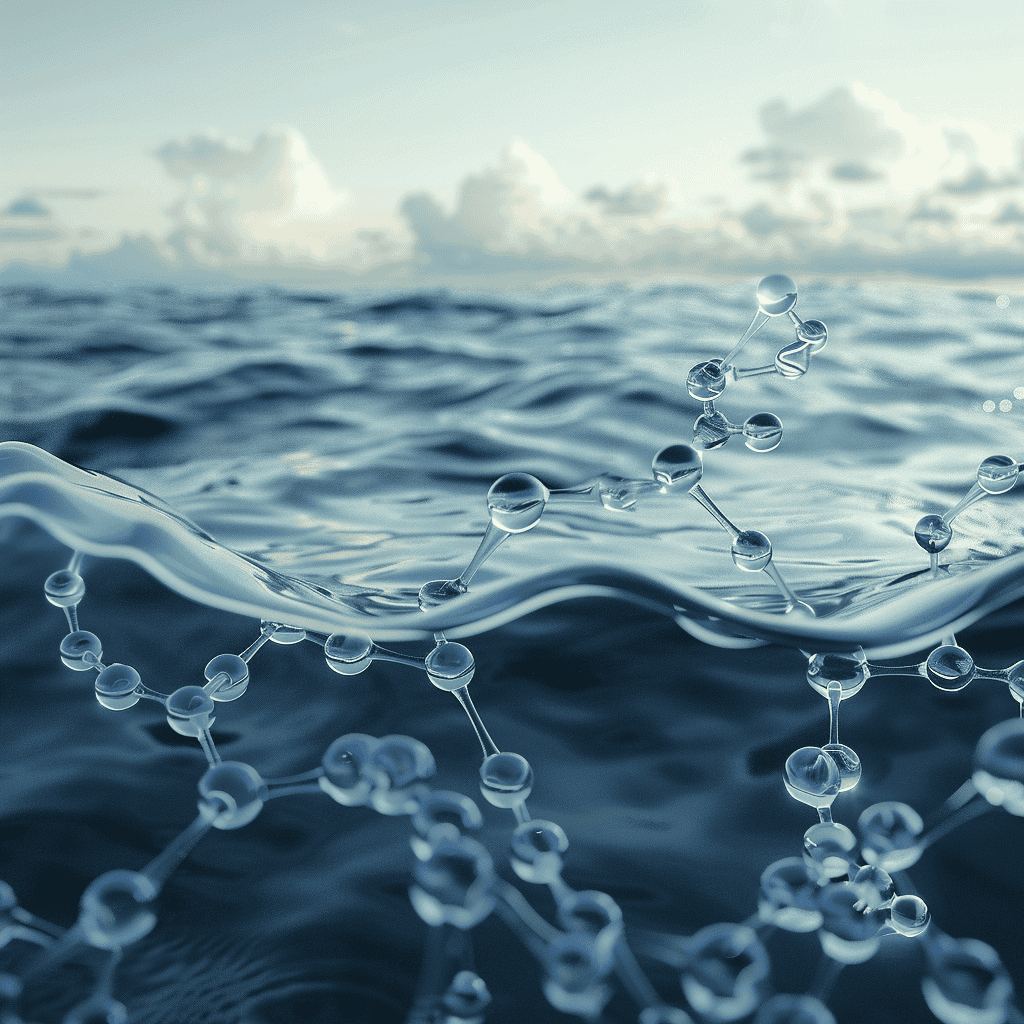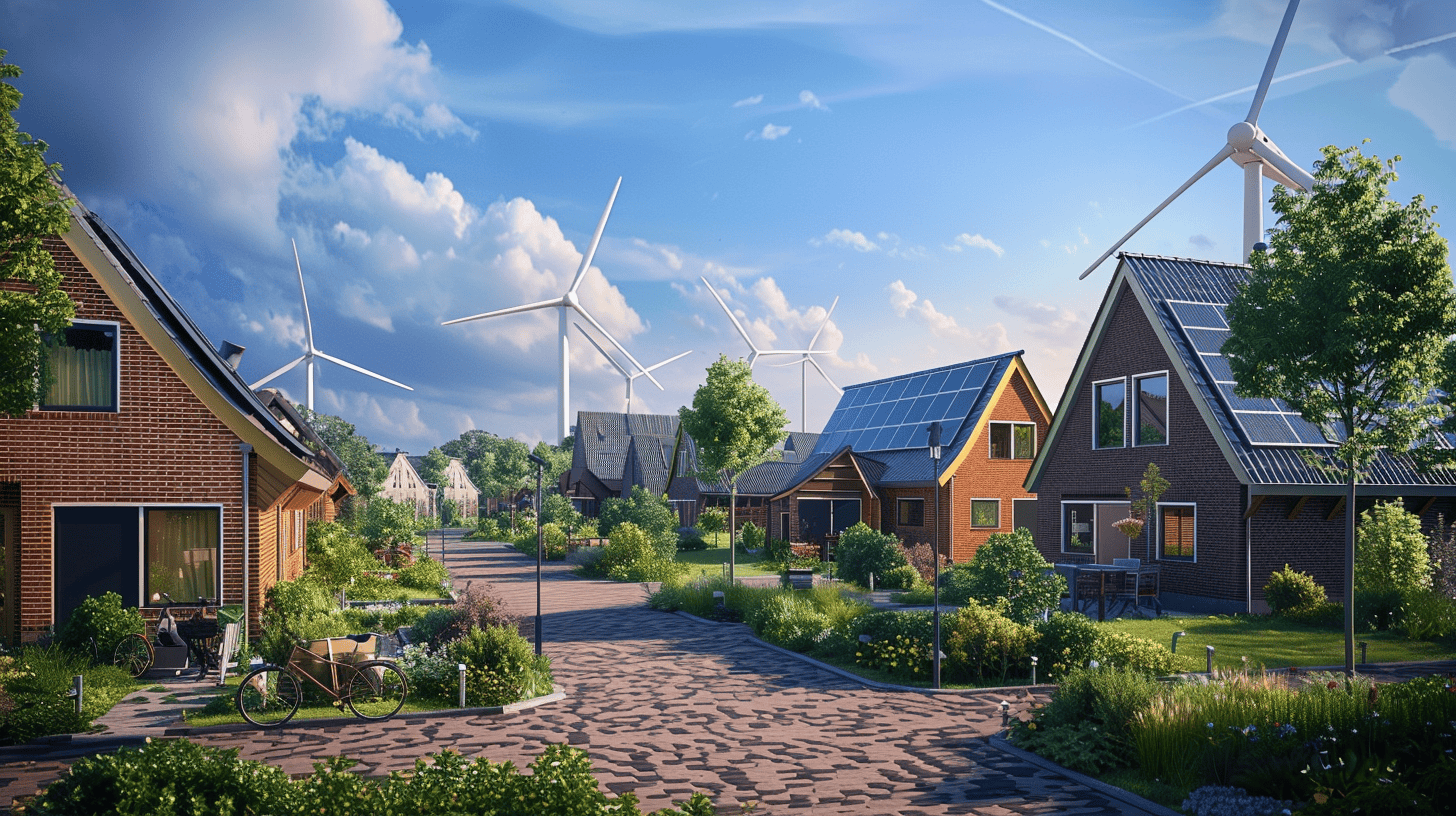
Natural elements are behind the cleanest energy we can generate: sun, wind, and geothermal heat. The ocean is also part of this club. Although currently limited in application, wave and tidal energy can play a role in tomorrow’s energy mix.
At the Marine Renewable Energies Lab (MREL) of the Delft University of Technology (TU Delft), scientists are researching the possibilities of producing renewable energy from seawater. The institute, led by George Lavidas, can count on a multidisciplinary team researching wave models, costs, and feasibility of ocean energy installations.
There are three main ways to harness power from the ocean: wave energy, tidal energy, and ocean thermal energy conversion. While the latter is more efficient for the equatorial ocean latitudes, wave and tidal energy can be leveraged in the Netherlands and Europe, too.
What can we learn from the sea? What role can the ocean play in generating renewable energy? And how can innovations help us take better care of the sea? Find out in our newest edition: IO Next: The Ocean.

Wave and tidal energy
How do wave and tidal energy differ? Waves primarily originate from the wind blowing over water. Therefore, wave energy converters can be placed on the shoreline or in the open ocean using floats that follow wave movements, turning a generator. Different converters exist depending on the plant’s location, depth, and sea conditions.
Tides result from the rotation of the Sun-Moon-Earth system and the subsequent variations in the gravitational force on Earth. Tidal energy is best harnessed with underwater turbines, which are smaller versions of wind turbines with stronger blades—bear in mind that water is about a thousand times denser than air. Another way of harnessing tides’ energy is through tidal barrages, which exploit the difference between water levels similar to hydroelectric dams. While hydroelectric plants pump water up and down in tidal barrages, gravity naturally creates the difference.
“We conducted two studies to quantify wave and tidal energy resources in the Netherlands. Wave energy potential is greater and more distributed overall. However, there are cases of local use of tidal energy in the Wadden Sea and the province of Zeeland. Both wave and tidal energy will be deployed., To what extent depends on the market push mechanisms, but we expect to see them installed in the next years,” underlines Lavidas.
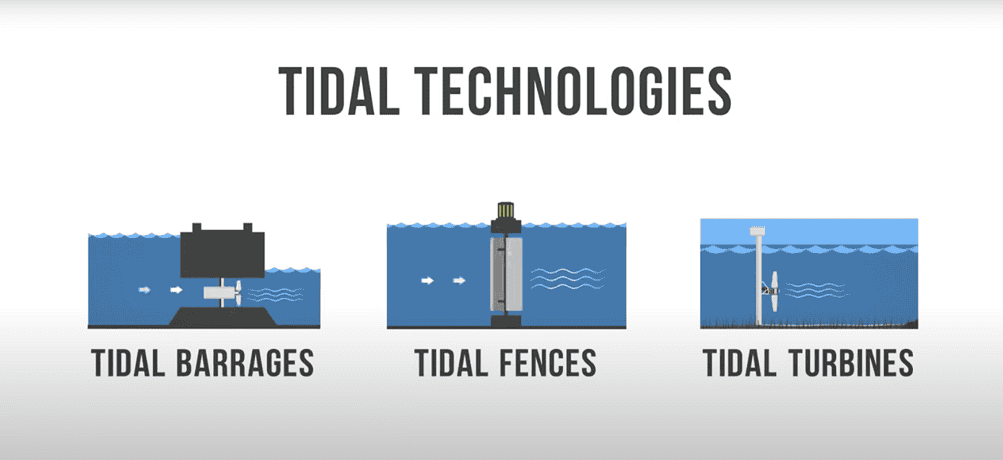
Ocean Thermal Energy Conversion
In addition to tidal and wave energy, there is an extra way to generate renewable energy from ocean waters: Ocean Thermal Energy Conversion (OTEC). This method leverages the natural temperature differences in oceans to produce clean energy at all times. However, this technology is primarily available in equatorial areas with higher temperature differentials.
OTEC uses the warm ocean surface water to vaporize a fluid with a low boiling point – such as ammonia. Expanding, this vapor drives turbines coupled with generators that produce electricity. Then, the vapor is cooled using cold seawater from the deep of the ocean. This way, the liquid is condensed and usable again, establishing a continuous electricity generation loop.
The cost barrier
Wave and tidal energy aren’t new energy-generating technologies. The first wave energy converters date back to the 18th century. The technology has been developed further in the last fifty years. Tidal energy has been harnessed for centuries to operate grain mills. However, in our times, the high costs limit the deployment of marine installations. For example, the UK contract price for tidal stream energy is around £178 per MWh, compared to £65 for offshore wind.
“The high costs are usually associated with overengineering to compensate for uncertainties,” says Lavidas. “These devices first need to produce energy reliably and, at the same time, withstand corrosion and seawaters’ harsh conditions.” As a result, governments and companies opted to invest in other ‘less demanding’ renewable energy projects, such as solar and offshore wind projects. However, according to a study conducted by the MREL, wave energy cost per kilowatt can be as low as €60 per MWh.

To Lavidas, comparing offshore wind farms and tidal or wave energy installations makes no sense, given the maturity of the different technologies and the thousands of offshore wind turbine installations. “When comparing renewables to renewables, the counter-argument is that the time frame of production should also be taken into account. With wind energy, production can change a lot in a short span of time. By contrast, with tidal energy we are sure that every 12 hours and 42 minutes – the tide frequency, based on half lunar day ed. – you will have a six-hour window for maximum production. It’s not a comparison, but what would be the cost of balancing the electricity grid?”
Complementarity
One of the main advantages of tidal and wave energy is their higher predictability, whereas solar and wind energy are more volatile. As explained, tidal energy production is tied to lunar days, so that a tide period can be accurately forecasted. Besides, waves are less volatile in magnitudes and directionality changes due to water’s density.
Lavidas sees value in combining wind and wave energy, leveraging their production time difference to generate more stable energy. Winds blowing locally predominantly generate waves. However, they are often joined by swells, waves originating far away and propagating for hundreds of kilometers. In the case of the North Sea, swells can come from the Arctic Ocean. Swells can reach an 8-meter height, and when merging into local wave regimes and seabeds, they reduce their heights. These interactions can influence wind and wave peak production times.
“Peak production time of wave and wind doesn’t happen simultaneously. The two peaks have a delay of anywhere from three to six hours, depending on the location, because waves come with different frequencies. Going a step further, we analyzed the different performance applications, and such delay can reduce the need for storage from 30 to 50%,” explains the scientist. The North Sea has a three to four-hour delay between wind and wave peak energy production. As a result, the electricity grid would be better balanced while uptaking green power.
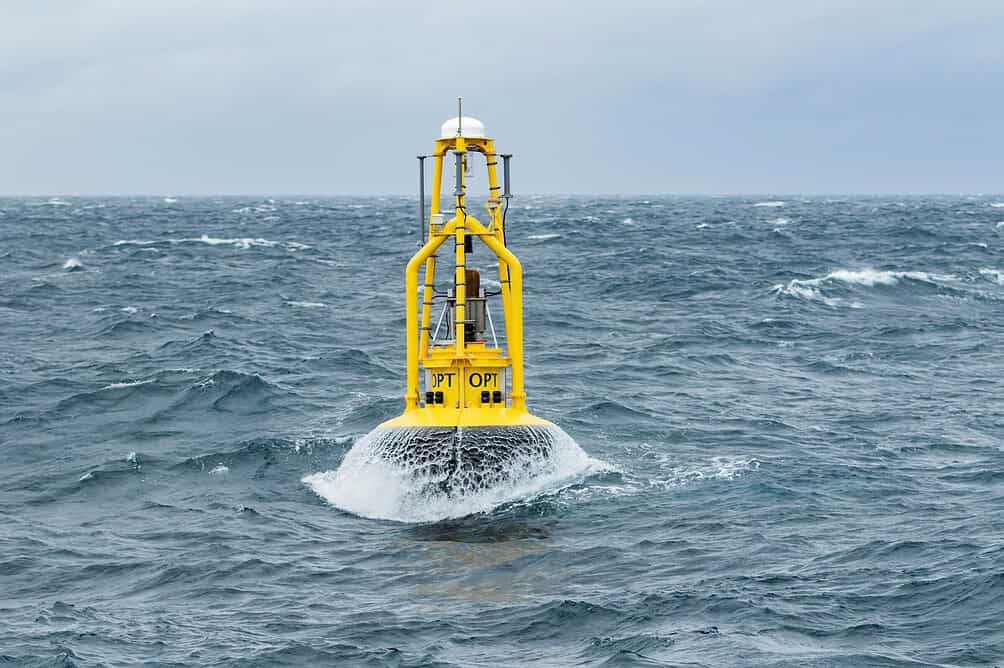
Marine energy outlooks
As part of its Green Deal, the European Union set targets for ocean energy, with at least 1GW capacity installed by 2030 and 40GW by 2050. “Other member states, such as Ireland, Portugal, and Italy, are pushing for wave energy more, deploying funding and mechanisms to foster developments. The Dutch government didn’t set any specific targets about marine energy,” adds Lavidas. The researcher believes that, in the future, marine energy can contribute to 10-15% of the energy mix.
Funding and research will decide future developments in the Netherlands and beyond. Both studying waves more accurately and designing less expensive devices need to happen. The MREL is active in different national and international research initiatives to study oceans and aims to offer the most state-of-the-art solutions to the industry and policymakers. “My goal is to ensure we are doing enough fundamental and applied research that industries and stakeholders can use. Research always looks 10 to 15 years ahead, but we know that waves and tidal energy can already have an impact. And for the energy transition, all solutions play a role,” he concludes.
